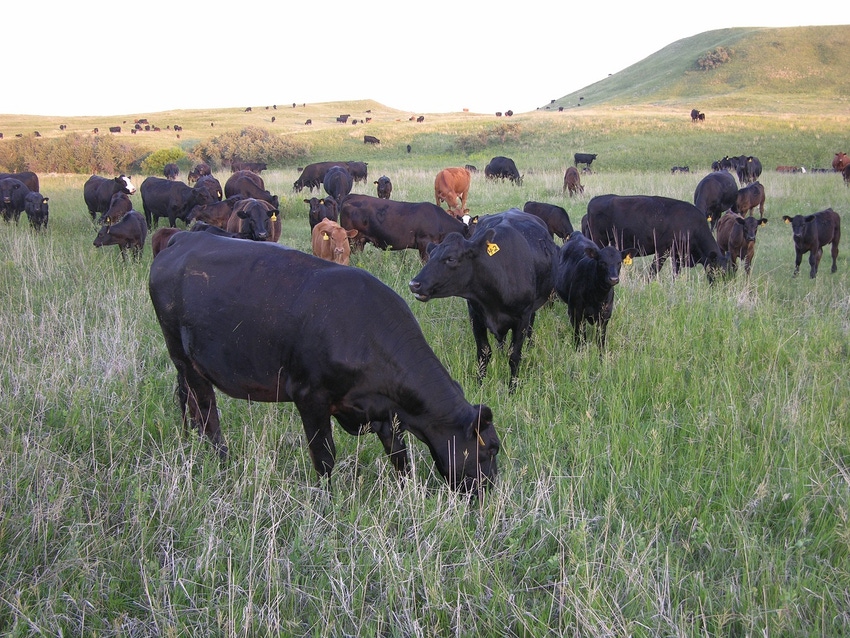
The hardest part of this business is learning to really think.
At the time of his death in December 2017 my friend Gordon Hazard had been in the cattle business successfully for 78 plus years. From a nearly scratch start his cattle had paid for over 3,000 acres of northeast Mississippi prairie, annual expenses and bank notes, and he never saw a cattle year that was not profitable. Hazard never actually considered himself a full-time rancher since there were always times of the year that there was just not enough to do.
The reply to a question I once threw at Doc was, "Cooke, you are not thinking."
Since most of my clients and readers are cow-calf operators I will start by stating the fact that there are not any cow-calf operations in the natural model. Think about it and you hopefully will agree and follow me as we look at the fact that most producers in the cattle business run out of their major resource, grass or forage, on a regular basis. Remember that it takes grass to grow grass. If we are running out, it should be clear that our management needs to change.
The non-growing season, whether it's winter or drought, leaves most producers without their major resource (forage) and takes out their other major resource (soil) along with their profits, or at least a large portion. With few exceptions feeding cattle is a money loser and a resource killer. It is so common and has been practiced so long that we fail to “think” about it. We also fail to make lots of profit.
Hazard told me more than once that a rancher needed to have a "right number" of cattle but was always better off with a few less than too many.
Cow/calf producers normally have too many cattle not because they have huge numbers or pounds but because they are not thinking about partial plant recovery or "partial rest."
Another lack of thought has to do with natural systems and the fact that there are zero cow/calf operations in nature. I’ll address both issues and I’ll not be exhaustive. We need to think to get through these ideas.
The forage crippler
For thousands of years the number one mistake cattlemen have made concerning their livestock and land resource has been partial plant recovery. Some people have heard of the "law of the second bite" but that is not exactly the same as partial plant recovery. Complete plant recovery means that the entire forage community has recovered and completely regrown since the past grazing. Our emphasis should be toward management and monitoring for an increase in high-seral grasses and their higher biomass and energy levels. With few exceptions this is 70 or more days in the growing season in temperate areas and up to 22 months in brittle environments. The yield in nutrition, biomass, soil health and animal numbers double the outputs in two to five years.
Plant diversity in huge amounts and an ecosystem that is species rich is our biggest ally. All this plant diversity yields soil health, animal health, plant health and our profitability.
Adaptive, high-density grazing, which I often call boom and bust grazing, practiced in a chaotic manner and followed by complete plant recovery yields all of the above when we plan and think and execute.
No cow-calf operations
The cow-calf business is not actually a viable business in nature for lots of reasons. Next year’s weather patterns and forage growth are going to be predictable only in the fact they will be different from this year. Successful forage management must flex and extend as we respond to daily weekly and monthly changes. In the cow-calf business, the more our local ecosystem swings with changing weather patterns, the fewer percentage of cows need to make up our base operation because each cow needs a roughly fixed amount of forage each year.
To counter this problem, we recommend cow-calf operations should include:
Cows
Calves
Weaned calves
Short yearlings
Long yearlings and replacements
Bulls less than 4 1/2 years of age
Some of these herd members can be changed to fit the weather and forage growth. In addition, I seldom recommend "take-in" cattle for this flexibility, but they can work successfully.
Note that we run all these animals as a single herd most days of the year. Note also that we have lots of good marketable animals to sell when we see times starting to get tough. Destocking your base cow herd is something your neighbor is forced into doing. But you have thought and executed. You have forage ahead of you, a changeable herd of animals, and drought should not easily take you out.
About the Author(s)
You May Also Like






